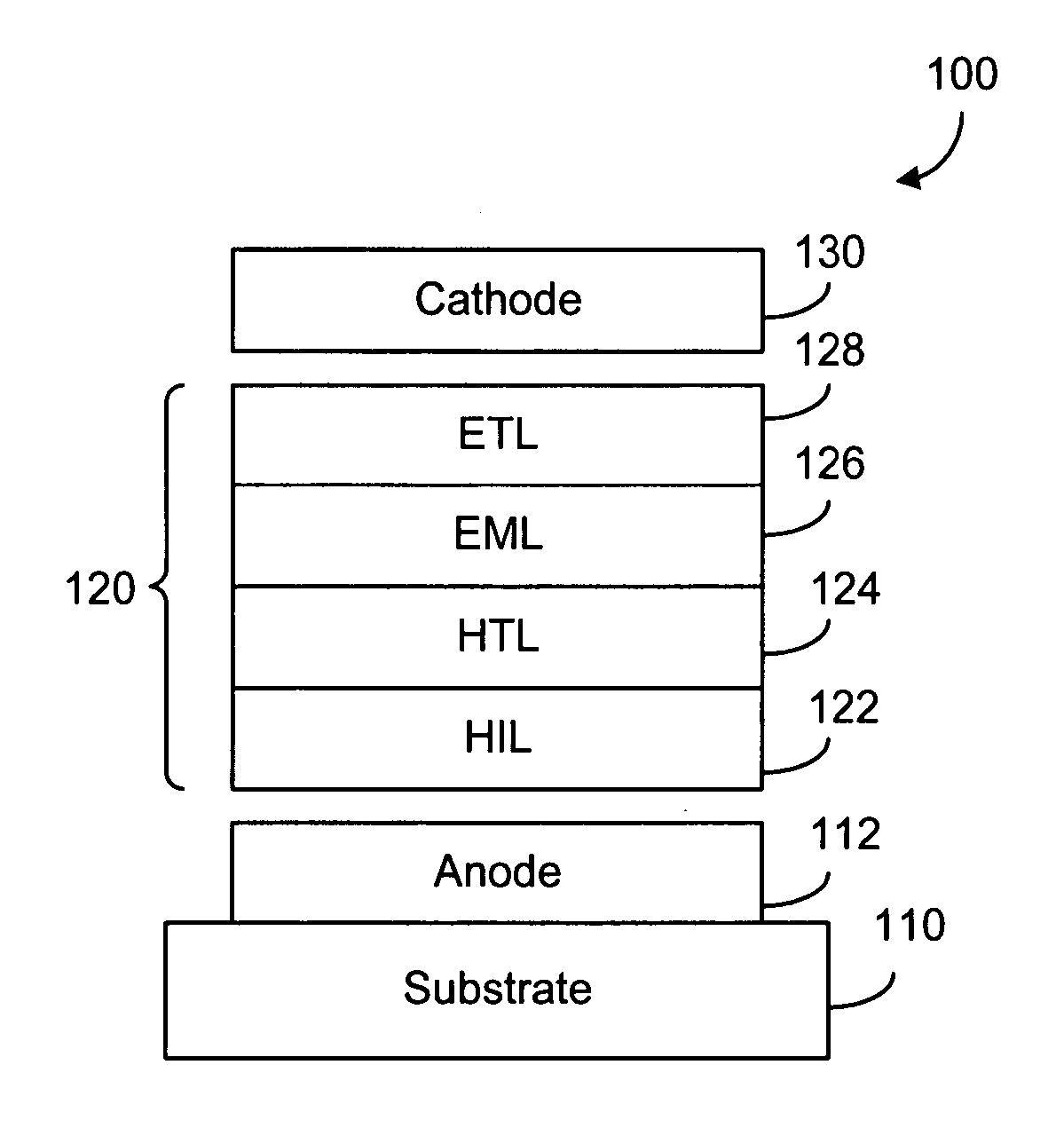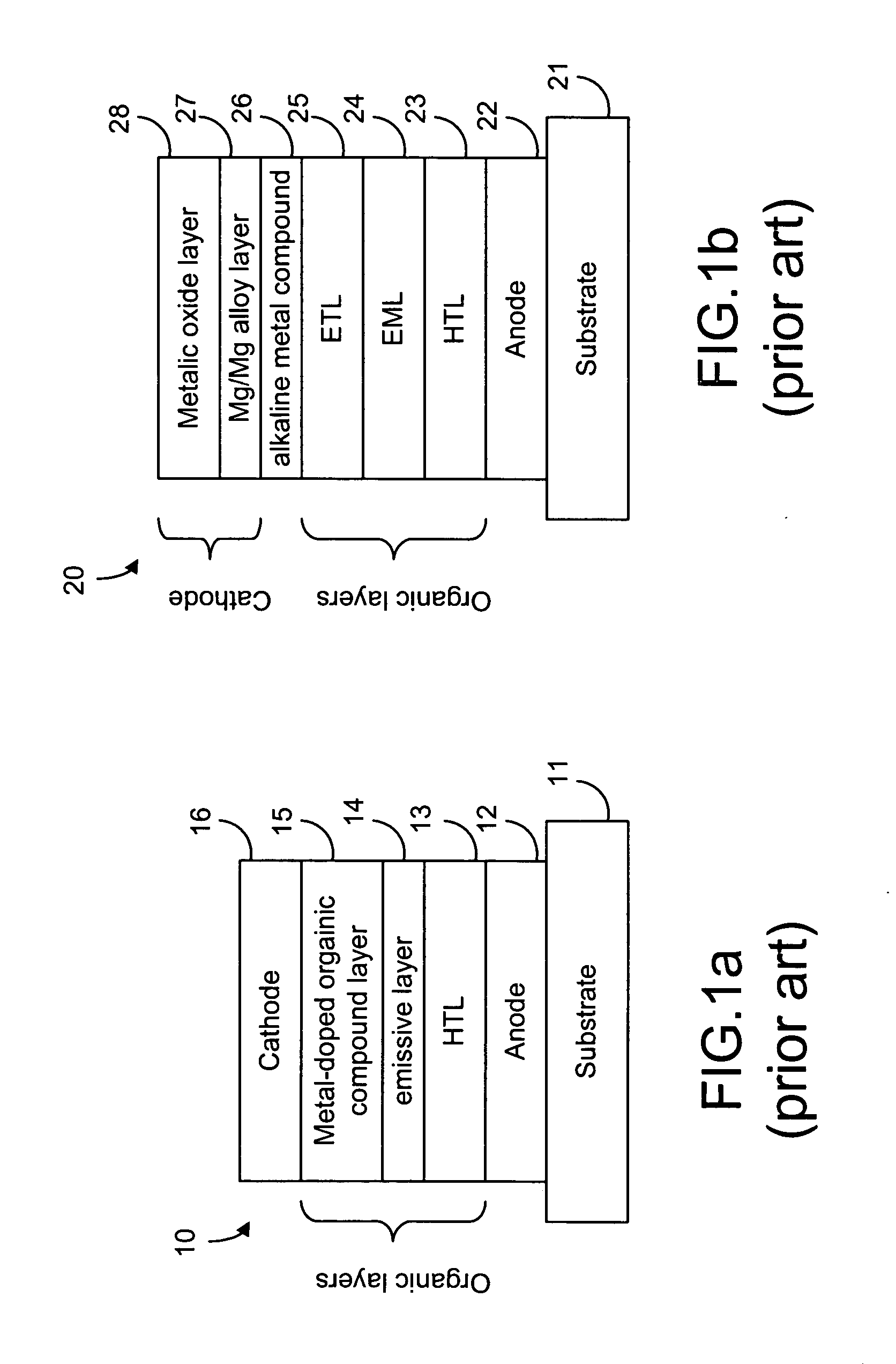Organic light-emitting device with improved layer structure
- Summary
- Abstract
- Description
- Claims
- Application Information
AI Technical Summary
Benefits of technology
Problems solved by technology
Method used
Image
Examples
Embodiment Construction
[0056] The structure of the organic light-emitting device (OLED), according to the present invention, is shown in FIG. 2. In general, the OLED 100 comprises an organic layer structure 120 disposed between an anode layer 112 and a cathode layer 130. The anode layer 112 is disposed on a substrate 110. The organic layer structure 120 may comprise a hole injection layer (HIL) 122, a hole transport layer (HTL) 124, an emissive layer (EML) 126 and an electron transport layer (ETL) 128. The organic layer structure 120, according to the present invention, comprises substantially an organic host material for use in the HIL 122, the HTL 124, the EML 126 and the ETL 128. As shown in FIGS. 3a and 3b, the organic host material in the HIL 122 is doped with a p-type dopant; the organic host material in the EML 126 is doped with a luminescent dopant or dye; and the organic host material in the ETL 128 is doped with an n-type dopant. The luminescent dopant in the EML 126 can be a fluorescent dopant ...
PUM
| Property | Measurement | Unit |
|---|---|---|
| Structure | aaaaa | aaaaa |
| Transport properties | aaaaa | aaaaa |
| Fluorescence | aaaaa | aaaaa |
Abstract
Description
Claims
Application Information
 Login to View More
Login to View More - R&D
- Intellectual Property
- Life Sciences
- Materials
- Tech Scout
- Unparalleled Data Quality
- Higher Quality Content
- 60% Fewer Hallucinations
Browse by: Latest US Patents, China's latest patents, Technical Efficacy Thesaurus, Application Domain, Technology Topic, Popular Technical Reports.
© 2025 PatSnap. All rights reserved.Legal|Privacy policy|Modern Slavery Act Transparency Statement|Sitemap|About US| Contact US: help@patsnap.com



